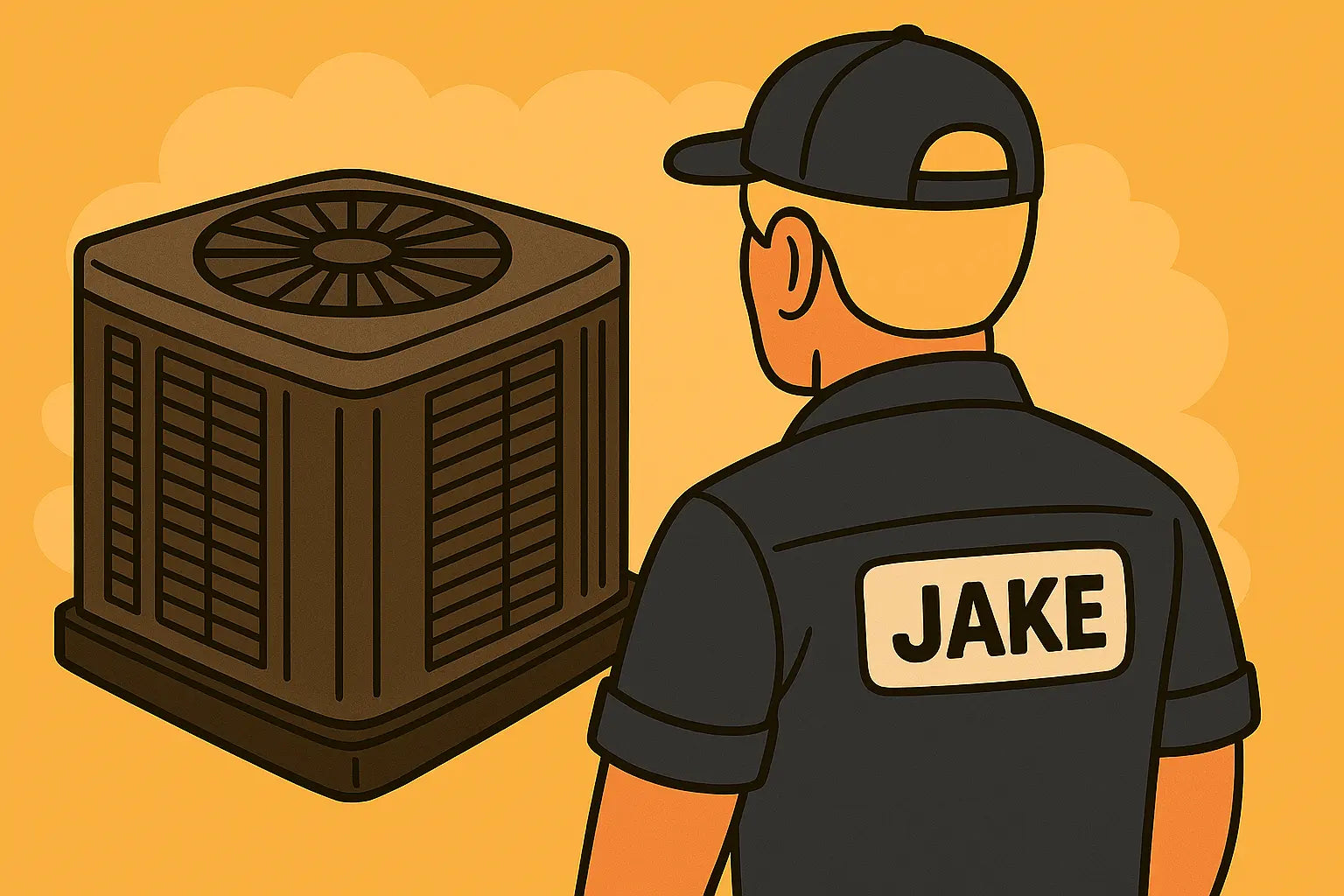Yo, it’s Jake 👋
Welcome to the no-fluff zone. Whether you’re knee-deep in ductwork or just trying to figure out why your AC sounds like it’s choking on a chicken bone, I’ve got you. Installing or fixing central air? Yeah, it’s not rocket science—but you better get it right, or you’ll end up hot, broke, or both. Let’s dive in. 💪
1. Getting the Install Right the First Time
Installing central AC is more than slapping a condenser outside and plugging stuff in. One rookie mistake—like undersizing the system—and your whole house turns into a sauna. Rule #1: size it right. Rule #2: place it smart. Rule #3: seal the ducts like your life depends on it.
The U.S. Department of Energy backs this up—installation errors can cut efficiency by up to 30%. That’s real money down the drain every month.
Quick tips:
-
Sizing: Use Manual J to calculate load. Don’t eyeball it.
-
Location: Keep that condenser in the shade with 2–3 feet of clearance.
-
Ducts: Undersized or leaky ducts are airflow killers. Tape alone won’t cut it—use mastic and insulate properly.
Jake’s note: If your installer doesn’t do a load calc or skips checking static pressure? 🚩
2. The Step-by-Step Install Walkthrough 🛠️
Here’s how a clean, pro-level install should go:
-
Run a proper load calculation (Manual J)
-
Select matching components (condenser, coil, air handler or furnace)
-
Level the condenser slab and provide 6”–12” ground clearance
-
Install insulated refrigerant lines, ensuring correct length and slope
-
Wire the thermostat and disconnect box correctly (label your wires, people!)
-
Seal, insulate, and pressure-balance your ducts
-
Vacuum the lines, charge refrigerant by weight—not guesswork
-
Test controls and system operation
Pro Tip: Follow the HVAC Quality Installation guidelines from AHRI. It’s the gold standard.
3. Troubleshooting Like a Champ 🧰
Here’s where the fun begins. Something not working? You don’t always need a tech. Let’s break down the usual suspects and what you can actually fix yourself.
a) AC Not Turning On
-
Thermostat dead? Try new batteries and reset it.
-
Tripped breaker? Flip it once—if it trips again, call an electrician.
-
Blown low-voltage fuse (usually 3A on the control board)? Easy swap.
If none of that works, you could have a fried contactor or capacitor.
b) Weak Airflow
-
Dirty filter? Replace it. Like now.
-
Frozen coil? Turn off the unit and let it thaw. Could be low refrigerant.
-
Duct leak? Feel around attic ducts for air leaks or disconnects.
Heads up: The team at Service Titan has a great airflow troubleshooting chart you can keep handy.
c) Weird Noises or Smells
-
Buzzing? Capacitor might be toast.
-
Squealing? Could be the blower motor or belt.
-
Musty smell? Moldy drain pan or clogged condensate line. Flush with vinegar.
If it smells like burnt toast or a dead rodent… yeah, time to phone a friend 🫠
d) AC Running But Not Cooling
You’re getting airflow, but no chill? Check these:
-
Thermostat set to “Fan Only” by mistake
-
Dirty outdoor coil choking the condenser
-
Low refrigerant or leak—time for a pro
More on that below 👇
4. When to Call in the Big Guns 🔧
If you’ve got:
-
Refrigerant issues (EPA Section 608 license required)
-
Electrical shorts
-
Compressor failure
-
Duct redesign needs
Do not DIY. Trust me, you do not want to mess up a refrigerant charge or spark a panel. Your wallet and eyebrows will thank you.
The EPA has a full guide on what refrigerant-related stuff homeowners can and can’t do. Read it. Respect it.
5. Maintenance Tips to Keep It Chill 🧊
Routine AC care = fewer breakdowns, lower bills, and longer system life. Seriously, most people forget this stuff and then cry when summer hits.
-
Change filters every 1–3 months
-
Clean outdoor coils each spring with a hose (not a pressure washer!)
-
Flush your condensate drain line with vinegar
-
Clear leaves and grass from around the condenser
-
Schedule a spring and fall tune-up
This maintenance checklist from HVAC.com will keep your system happy year-round.
6. Why The Furnace Outlet Systems Make Install Easier
Buying from The Furnace Outlet’s central AC collection means you're getting pre-matched systems. That saves a ton of headache trying to match coils, SEER ratings, or line-set requirements. And their tech specs are spot-on if you’re doing your own prep.
Don’t piece together your system off five random websites. Stick to what works.
Want to make sure your central AC is the right size? Visit: Too Big, Too Small, or Just Right?
Jake’s Final Word 💬
Alright folks, I’m gonna level with you—central AC systems are amazing when they’re installed right. But one loose wire, one dirty filter, or one undersized duct can leave you sweaty and broke. Don’t let it get to that point.
Use this guide, lean on your resources, and don’t be afraid to call a pro when things get dicey. You’ve got this. Stay cool out there—and tell your condenser I said hi 😎
Until next time,
- Jake, your comfort loving tech







